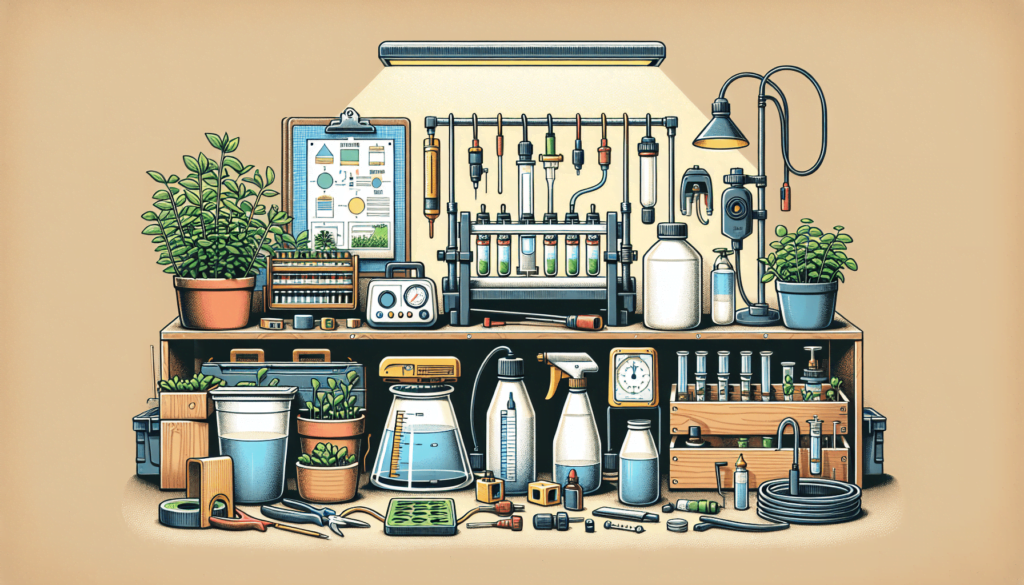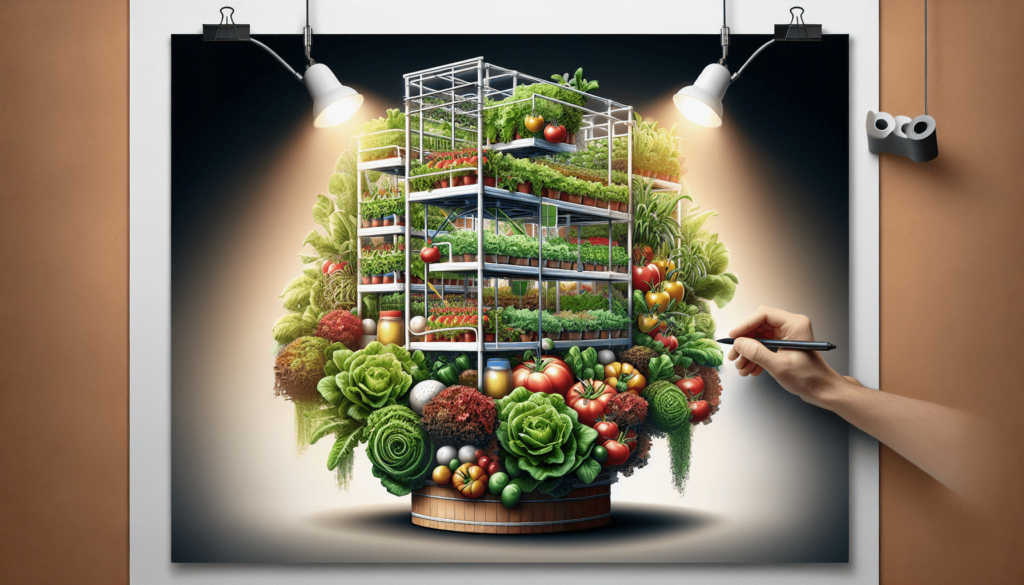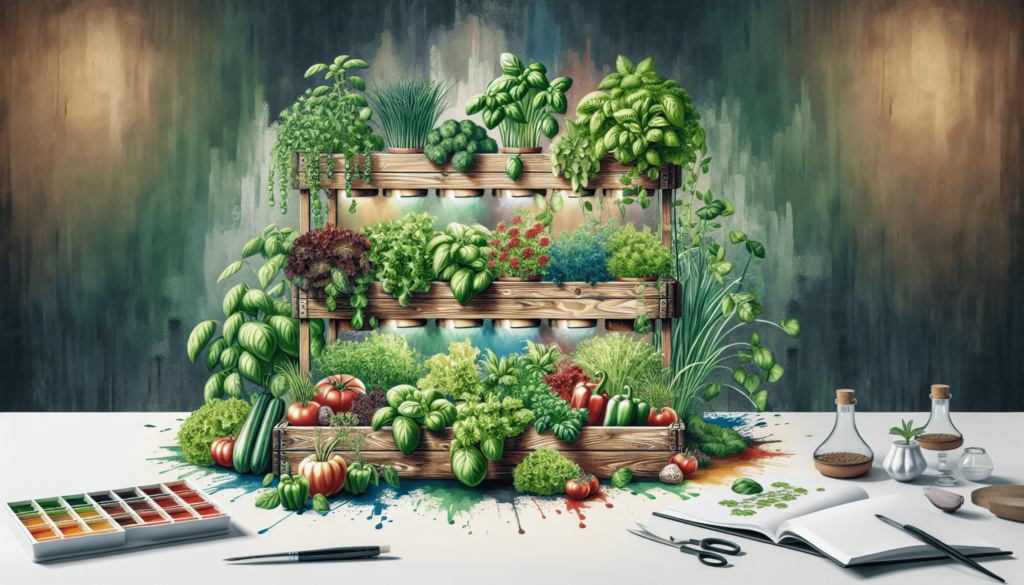Are you tired of spending endless hours maintaining your hydroponic system? Well, we've got some great news for you! In this article, we're going to show you how to maintain a hydroponic system with mason jars and save yourself both time and effort. Imagine having a thriving garden without the hassle of traditional soil-based gardening. With our method, you'll be able to enjoy all the benefits of hydroponics while minimizing the maintenance required. So, let's get started and find out just how much maintenance does a hydroponic system with mason jars really require?
Why Choose a Hydroponic System with Mason Jars?
The Benefits of Using Mason Jars in Hydroponics
When it comes to hydroponic systems, mason jars might not be the first thing that comes to mind. However, these humble glass containers can offer numerous benefits for your hydroponic setup.
First and foremost, using mason jars is an affordable option. You don't have to invest in expensive equipment or specialized containers. Mason jars are readily available and can be easily repurposed for hydroponics. Plus, their transparent nature allows you to observe the root growth and nutrient levels in your plants, making it easier to monitor their progress.
Another advantage of using mason jars in hydroponics is their versatility. These jars come in various sizes, allowing you to accommodate different plant sizes and types. You can also experiment with different nutrient solutions and growing mediums to find the perfect combination for your plants' needs.
How a Hydroponic System with Mason Jars Can Save Time and Effort
One of the main reasons why people choose hydroponics is because it can significantly reduce the time and effort required for traditional soil gardening. And when you combine hydroponics with mason jars, you take this convenience to a whole new level.
With mason jars, you eliminate the need for watering plants manually. The hydroponic system provides a constant flow of water and nutrients directly to the plant roots, ensuring they receive the necessary sustenance without any guesswork. This automation not only saves you time but also ensures optimal nutrient absorption for faster and healthier plant growth.
Furthermore, maintaining a hydroponic system with mason jars requires less space compared to traditional gardening methods. You can set up your hydroponic garden in a small apartment or even a balcony, maximizing your indoor or outdoor space. This compact setup not only saves physical effort but also allows you to enjoy fresh homegrown produce regardless of the limited space you have available.
Setting Up Your Hydroponic System with Mason Jars
Choosing the Right Mason Jars
Now that you understand the advantages of using mason jars in hydroponics, let's dive into the process of setting up your hydroponic system.
When choosing mason jars for your hydroponic setup, opt for wide-mouth jars. These jars allow easy access for planting and maintenance. Additionally, consider the size of the jar based on the plant types you intend to grow. While smaller plants can thrive in pint-sized jars, larger plants may require quart-sized or half-gallon jars.
Ensure that the mason jars you choose are in good condition and have functioning lids. Proper sealing is crucial to prevent leaks and maintain the hydroponic system's efficiency.
Selecting the Ideal Hydroponic Plants
Once you have your mason jars ready, it's time to select the perfect plants for your hydroponic system. Leafy greens like lettuce, spinach, and kale are excellent choices for beginners due to their adaptability and quick growth.
Consider the space available and the growth characteristics of each plant. Some plants, such as tomatoes or cucumbers, may require trellises or stakes for support. Others, like herbs or smaller greens, can thrive in smaller jars without additional support structures.
Remember to choose plants that can thrive in a hydroponic environment. Avoid plants that have deep root systems, as mason jars may not provide sufficient space for them to grow properly.
Assembling the Hydroponic System
Once you have your mason jars and plant selections ready, it's time to assemble your hydroponic system. Start by adding a layer of growing medium to the bottom of each jar. Vermiculite or coconut coir are popular choices that provide excellent drainage and aeration for the root system.
Next, place the plant's root system into the jar, ensuring that the roots are fully covered by the growing medium. Gently press the medium around the roots to provide stability.
Now, it's time to prepare the nutrient solution. Follow the instructions provided with your chosen nutrient solution to mix the appropriate amounts. Fill each mason jar with the nutrient solution, making sure the roots are fully submerged.
To maintain the hydroponic system's efficiency, use an air stone or a small aquarium pump to oxygenate the nutrient solution. This additional oxygen supply is essential for the plants' root health and overall growth.
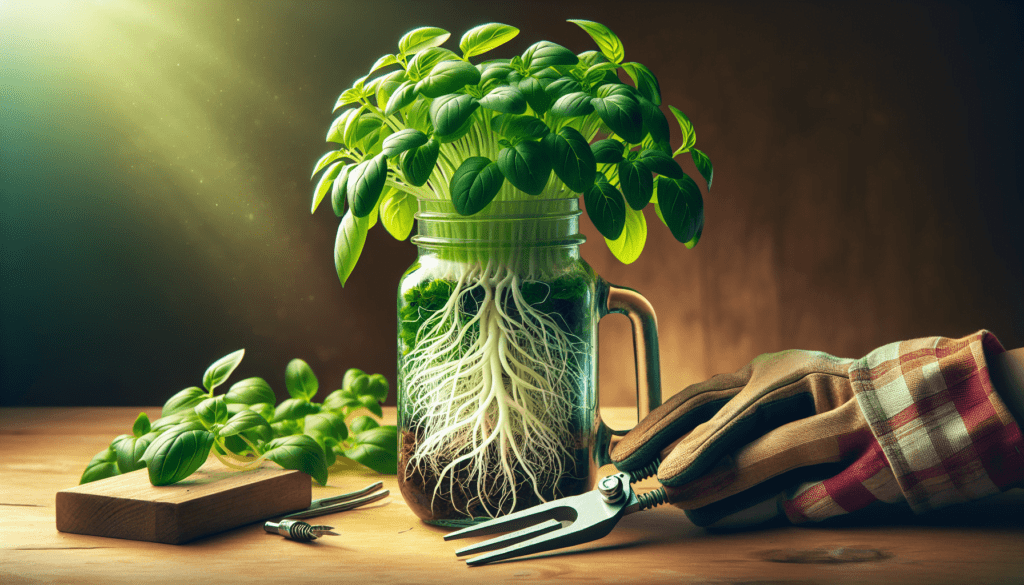
Monitoring and Maintaining pH Levels
Why pH Levels are Important in Hydroponics
In any hydroponic system, maintaining proper pH levels is crucial for plant health and nutrient absorption. The pH level determines the acidity or alkalinity of the nutrient solution, affecting the plant's ability to absorb necessary nutrients.
If the pH level is not within the appropriate range, plants may experience nutrient deficiencies or become more susceptible to diseases. Monitoring and adjusting the pH levels is a vital part of maintaining a successful hydroponic system with mason jars.
How to Test and Adjust pH Levels in a Mason Jar System
Testing the pH levels in your mason jar system is simple and can be done using a pH testing kit or a digital pH meter. Follow the instructions provided with the testing kit or meter to obtain an accurate reading.
The ideal pH range for most hydroponic plants is between 5.5 and 6.5. If the pH level is too high (alkaline), you can lower it by adding a small amount of pH-down solution, typically composed of phosphoric acid. On the other hand, if the pH level is too low (acidic), you can raise it by adding pH-up solution, usually made of potassium hydroxide or potassium carbonate.
Regularly monitor the pH levels in your mason jars and make adjustments as needed. Maintaining the proper pH balance ensures that your plants can absorb nutrients efficiently, leading to healthier and more productive growth.
Providing Adequate Nutrients
The Importance of Nutrients in Hydroponics
In traditional soil gardening, plants obtain essential nutrients from the soil. However, in a hydroponic system, it's essential to provide these nutrients directly to the plant roots.
Nutrients play a crucial role in plant growth, contributing to overall health, fruiting, and flowering. They are typically divided into two categories: macronutrients and micronutrients. Macronutrients include nitrogen, phosphorus, and potassium, while micronutrients consist of essential minerals like iron, magnesium, and calcium.
Properly providing these nutrients in the right proportions is essential for optimal plant growth and productivity.
Choosing the Right Nutrient Solution for Your Mason Jar System
When selecting a nutrient solution for your mason jar system, consider the specific needs of the plants you are growing. Different plants require different nutrient ratios to ensure their healthy growth.
You can find premade nutrient solutions specifically formulated for hydroponics in gardening stores or online. These solutions are usually labeled with the specific plant types they are suitable for. Make sure to follow the instructions provided with the nutrient solution for the correct measurements and ratios.
Another option is to mix your own nutrient solution, which allows you to have more control over the nutrient composition. However, this can be more time-consuming and may require more knowledge about plant nutrient requirements.
Regularly Checking and Adjusting Nutrient Levels
Monitoring and adjusting the nutrient levels in your mason jar system is essential for healthy plant growth. Over time, as the plants absorb nutrients, the solution in the mason jars may require replenishment or adjustment.
Regularly check the nutrient levels in your jars and make adjustments as necessary. Refill the jars with fresh nutrient solution when the levels are low, ensuring the roots remain fully submerged. Additionally, periodically check the nutrient composition and adjust it based on the specific needs of your plants.
Keeping a close eye on the nutrient levels and maintaining a balanced nutrient solution will provide your plants with the optimal conditions for growth, leading to thriving hydroponic plants in your mason jar system.
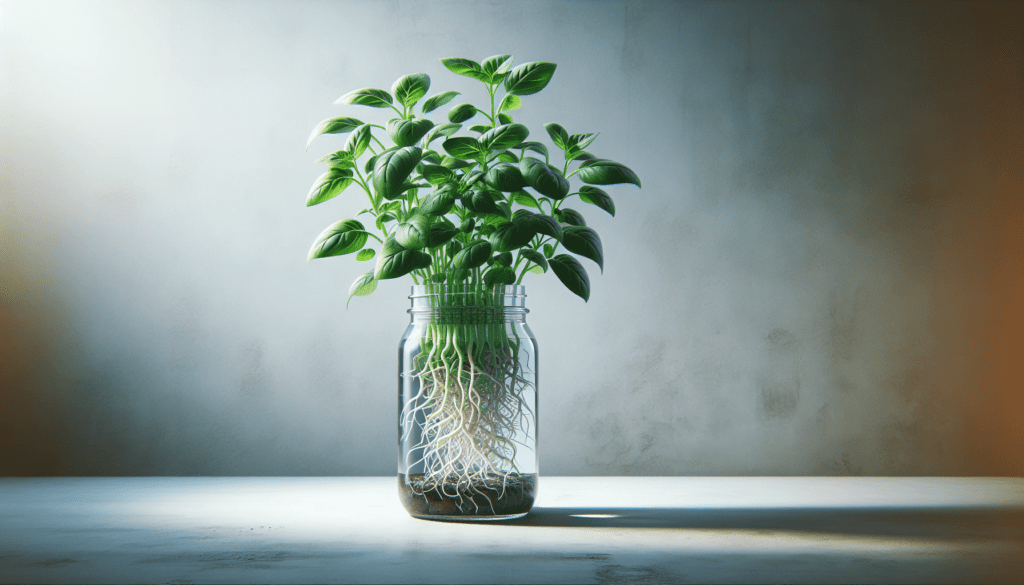
Maintaining Oxygen Levels
The Role of Oxygen in Hydroponics
Oxygen is essential for the success of any hydroponic system, including those using mason jars. Adequate oxygen levels promote healthy root growth, nutrient absorption, and overall plant vitality.
The root system of plants requires oxygen to carry out crucial functions, such as nutrient uptake and respiration. In a hydroponic system, where plants are not rooted in soil, it's vital to ensure that the plant roots receive sufficient oxygen to thrive.
Methods for Maintaining Oxygen Levels in a Mason Jar System
Maintaining oxygen levels in your mason jar system can be easily achieved through various methods. One common method is to use an air stone or a small aquarium pump. These devices introduce fine bubbles of oxygen into the nutrient solution, ensuring a constant supply of oxygen to the roots.
Another effective way to maintain oxygen levels is by utilizing a deep water culture (DWC) system. In a DWC setup, the plant roots are suspended directly in the nutrient solution, allowing them constant access to oxygen-rich water.
If you notice oxygen deficiency symptoms in your plants, such as slow growth or wilting leaves, it's crucial to take immediate action. Check your air stones or aquarium pumps for clogs or malfunctioning. If necessary, replace them to ensure a continuous supply of oxygen to your plants' root systems.
Remember, maintaining proper oxygen levels will lead to healthier and more robust plants in your hydroponic mason jar system.
Preventing Algae Growth
Understanding Algae Growth in Hydroponics
Algae can be a common nuisance in hydroponic systems. It thrives in the presence of water, light, and nutrients, which are all present in a mason jar hydroponic setup. Uncontrolled algae growth can lead to various issues, including nutrient depletion, clogged systems, and even plant root damage.
Algae can compete with plants for nutrients and light, affecting their growth and overall health. Additionally, algae can clog tubing or growing medium, disrupting the flow of water and nutrients in the system.
Tips for Preventing Algae in a Mason Jar System
Preventing algae growth in your mason jar hydroponic system is essential for maintaining the health and productivity of your plants.
One effective method is to minimize light exposure to the nutrient solution. Wrap the mason jars in a light-blocking material or store them in a dark area, preventing light penetration. Additionally, avoid placing the system near direct sunlight or intense light sources that can promote algae growth.
Maintaining proper water cleanliness is also crucial. Regularly monitor the system for any signs of algae growth and remove any visible algae promptly. Consider using a natural algaecide or a hydrogen peroxide solution in small quantities to inhibit algae growth without harming your plants. However, be cautious and follow the instructions provided to prevent any adverse effects.
Cleaning and Sterilizing Your Mason Jars
The Importance of Regular Cleaning
Regular cleaning and sterilizing of your mason jars are vital to maintain a healthy hydroponic system. Over time, residue and algae can accumulate on the jar surfaces, affecting water quality and potentially harboring pathogens.
Cleaning your mason jars between growing cycles ensures that you provide a clean and sterile environment for your next batch of plants. Additionally, periodic cleaning and maintenance prevent any potential disease outbreaks that can spread among plants.
Proper Methods for Cleaning and Sterilizing Mason Jars
Start by emptying and discarding the nutrient solution from your mason jars. Remove any growing medium and rinse the jars thoroughly with clean water, ensuring that no residual nutrients or algae remain.
To sterilize the jars, you can use a bleach solution. Mix one-part bleach with nine parts water, then soak the jars in the solution for at least ten minutes. Rinse the jars thoroughly with clean water to remove any remaining bleach residue.
Alternatively, you can use a hydrogen peroxide solution as a natural sterilizing agent. Soak the jars for ten minutes in a solution of one part hydrogen peroxide to ten parts water. Rinse the jars with clean water after the sterilizing process.
Ensure that the jars are completely dry before starting a new growing cycle. This helps prevent the growth of mold or bacteria due to excess moisture.
Troubleshooting Common Issues
Identifying and Resolving pH Imbalances
pH imbalances can lead to various issues in hydroponic systems, affecting plant health and nutrient absorption. If you notice your plants displaying symptoms of nutrient deficiencies or experiencing slow growth, pH imbalance could be the culprit.
To identify pH imbalances, regularly monitor the pH levels in your mason jar system. If the pH level is too high or too low, you can adjust it using pH-up or pH-down solutions, respectively. Follow the instructions provided with these solutions and gradually adjust the pH in small increments until it reaches the optimal range.
If pH imbalances persist or become recurring issues, consider testing the pH of your source water. Some water sources may naturally have high or low pH levels, which can impact your hydroponic system. In such cases, you may need to use a pH stabilizer or consider alternative water sources.
Addressing Nutrient Deficiencies or Excesses
Nutrient deficiencies or excesses can manifest in various ways, from yellowing leaves to stunted growth. It's essential to address these issues promptly to ensure your plants' optimal health and productivity.
Regularly monitor your plants for any signs of nutrient imbalances. Nutrient deficiency symptoms can vary depending on the specific nutrient lacking in the solution. Reference nutrient deficiency charts specific to your plants to identify the underlying issue.
If you notice nutrient deficiencies, adjust your nutrient solution accordingly to provide the lacking nutrient in the appropriate concentration. If excess nutrients are the issue, consider replacing the nutrient solution entirely and gradually adjust the nutrient composition to the correct levels.
Remember to start with small adjustments and closely monitor the plants' response. Gradual changes allow your plants to adapt without causing stress or shock that could further hamper their growth.
Dealing with Root Rot or Disease
Root rot is a common issue in hydroponic systems when the roots are constantly in contact with water without proper drainage. It can be caused by various factors, such as overwatering, poor oxygenation, or contaminated nutrient solutions.
If you notice brown or slimy roots, foul odor, or wilting plants, root rot might be the cause. To address this issue, start by providing proper oxygenation to the root systems. Ensure that your air stones or aquarium pumps are functioning correctly and provide a continuous supply of oxygen to the nutrient solution.
Additionally, ensure that your mason jar system has proper drainage to prevent water from pooling around the roots. Consider using grow media that provide exceptional drainage and aeration, minimizing the risk of root rot.
If root rot persists despite these efforts, you may need to remove the affected plants and sterilize the entire system. Cleaning and sterilizing mason jars, tubing, and any other components thoroughly can help prevent the recurrence of root rot or the spread of diseases.
Expanding and Scaling Your Hydroponic System
Adding More Mason Jars to Your System
Once you have mastered the art of hydroponics using mason jars, you may want to expand your system and grow even more plants. The beauty of mason jar systems is their scalability and flexibility, allowing you to easily add more jars to your setup.
Simply choose the appropriate number of mason jars, based on the space and resources available. Follow the same principles of assembling and maintaining your current system, ensuring each new jar receives adequate nutrient solution, oxygenation, and light exposure.
Creating a Larger or Multiple Systems
If you have more space and are looking to create a larger hydroponic system, you can consider using additional materials like PVC pipes or plastic containers. These materials can accommodate a larger number of mason jars, allowing you to grow an extensive variety of plants.
Another option is to create multiple independent mason jar systems. This approach gives you the flexibility to experiment with different nutrient solutions, growing mediums, or plant varieties within each system.
Remember to plan and design your larger or multiple systems carefully, ensuring sufficient space, proper airflow, and easy access for maintenance and monitoring. Scaling up your hydroponic system can be an exciting adventure that leads to a more abundant and diverse harvest.
User Stories and Tips from Hydroponic Enthusiasts
Success Stories from People Using Mason Jars in Hydroponics
Meet Jane, a home gardener who decided to try hydroponics using mason jars. At first, she was skeptical about using such a simple setup. However, she was quickly amazed by the results. Jane harvested her first batch of fresh lettuce within a few weeks, and the crispness and flavor exceeded her expectations. Now, she can't stop raving about mason jar hydroponics to all her friends and neighbors.
John, another hydroponic enthusiast, shared his success story with the community. He decided to utilize his small urban balcony to create a mason jar hydroponic garden. Starting with a few jars, John expanded his setup to over a dozen jars, successfully growing a variety of herbs, vegetables, and even strawberries. Not only did he enjoy the convenience of having fresh produce just outside his door, but he also found it to be a great conversation starter when hosting friends and family.
Tips and Tricks for Maintaining a Mason Jar Hydroponic System
Keep a journal: Maintaining a journal or record of your mason jar hydroponic system can be incredibly helpful. Note down the nutrient compositions, pH levels, and any adjustments you make. This documentation allows you to track the progress of your plants and identify any issues or patterns over time.
Involve the community: Join online hydroponic forums or social media groups to connect with other enthusiasts. Sharing your experiences, asking questions, and learning from others' experiences can enhance your hydroponic journey. You may even find inspiration for new plant varieties or innovative techniques to try in your mason jar system.
Experiment and have fun: Hydroponics is not only about providing plants with the necessary nutrients and care but also about embracing the joy of experimentation. Try new plant varieties, growing mediums, or nutrient solutions. Don't be afraid to step out of your comfort zone and see what your mason jar hydroponic system can produce.
Incorporate user-generated content: Share your success stories, photos, and tips with the hydroponic community. Contributing user-generated content not only builds trust and camaraderie but also encourages others to embrace the mason jar hydroponic experience.
Inviting Call to Action
Ready to embark on your hydroponic journey with mason jars? Join our community of home gardeners and hydroponic enthusiasts who are discovering the convenience, affordability, and fun of this incredible gardening technique. Start with a simple mason jar hydroponic system and watch your plants thrive while saving time and effort. Discover the joy of harvesting your own homegrown produce, right at your fingertips. Get started today and experience the wonders of hydroponics with mason jars!
